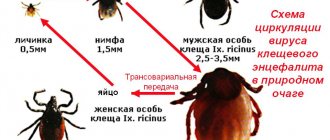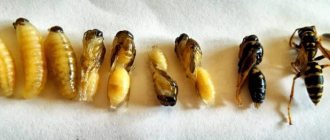At the end of the summer season, when the harvest is harvested, treatment of the polycarbonate greenhouse is a prerequisite for its further operation. A set of autumn and spring activities will make it possible to prepare the greenhouse for the new season and significantly extend its service life. Few people know about the need for preparatory work among beginning summer residents. But experienced gardeners sometimes simply ignore following the basic rules of care.
Why is it necessary to treat polycarbonate greenhouses?
First of all, it is necessary to treat greenhouses and greenhouses made of polycarbonate for sanitary reasons. Unfortunately, a favorable microclimate with high levels of humidity and temperature conditions contributes not only to the growth of vegetable crops, but also to the development of various pathogenic flora:
- Pathogens of infectious diseases;
- Spores of pathogenic fungi and mold;
- Pathogenic microorganisms;
- Pathogenic bacteria.
Without treating the greenhouse frame, polycarbonate covering and disinfecting the soil in the beds, the accumulated pathogens will infect plants planted in the new season. At the same time, many pathogens are able to maintain their viability for a long time. For example, spores of late blight, which infect tomatoes in greenhouses for 3...5 years, retain the ability to develop when exposed to favorable conditions.
Neglecting the rules of crop rotation leads to soil depletion and the accumulation of toxins and pathogenic bacteria in it. In this case, autumn treatment and disinfection of the soil in polycarbonate greenhouses is an excellent preventive measure against most ailments affecting vegetable crops. This measure allows you to avoid the appearance of late blight on tomatoes, fusarium, and blossom end rot. Soil cultivation is also effective in treating brown spot on tomatoes.
Treatment of greenhouse structures in the fall allows you to effectively combat insect pests. As a rule, by winter, adult individuals penetrate the ground and wait out the cold there perfectly. Digging the soil or partially replacing the soil can prevent the appearance of whiteflies and other pests in the greenhouse. Fumigation with sulfur bombs will save plants from spider mites.
That is why treating a polycarbonate greenhouse in the fall and spring helps not only reduce the risk of infectious diseases on cultivated crops, but also clean the structure itself from dirt, rust and dust. In addition, preparing the construction of protected soil involves cleaning and disinfecting garden tools, shelving, trellises and other auxiliary elements.
Rules for processing greenhouses in autumn
When treating a greenhouse against pests and diseases, you must follow a few simple rules:
- Use a minimum of chemicals (1–2). They destroy not only pests, but also beneficial bacteria.
- After chemical treatment, it is necessary to apply “Fitosporin”, “Baikal EM-1” or other biological preparations to restore beneficial microflora.
- Carefully follow the dosage indicated in the instructions, and in the case of chemicals, it is better to take a slightly smaller amount.
- Observe safety precautions: wear gloves and avoid getting the solution in your eyes.
- Do not process if the entire crop has not been harvested.
Autumn cleaning
You can start processing the greenhouse in the fall immediately after harvesting. First of all, the garter material, pegs and other auxiliary materials should be removed. Shelves and trellises are removed from the structure for further cleaning and disinfection. In designs that require the removal of polycarbonate, the coating is removed. After all, pathogenic microorganisms can also accumulate on them.
Before processing greenhouse soil, it must be freed from all plant remains: stems, tops, fallen seeds and roots. If the crops grown in the greenhouse were susceptible to any disease, the vegetation is destroyed. Healthy greens can be used to fill a compost heap.
ATTENTION! Compost should not be used to grow the plants from which it is derived.
All auxiliary elements (racks, trellises, stakes, twine, equipment) located in the greenhouse are subjected to disinfection treatment. To do this, you can use Fitosporin or a dark burgundy solution of potassium permanganate. All equipment is soaked for 1 hour, after which it is washed, dried and stored for winter storage.
Soil sanitation
Since crop rotation in protected soil structures is not always observed, it is worth replacing the greenhouse soil or disinfecting it. In the first case, the top layer of soil, approximately 7...9 cm high, is removed. A new layer of healthy soil is laid in its place. After this, the treated greenhouse made of cellular polycarbonate is applied with organic fertilizers and dug up along with the remaining lower layer of soil. If preparation for the upcoming season is carried out in the spring, only rotted organic matter can be used.
IMPORTANT! Contaminated soil removed from the greenhouse is best placed in piles at the edge of the site and processed. For this, the stacks are laid in layers (15...20 cm) sprinkling each layer with bleach at the rate of 250 grams of lime per 1 m2. In the summer, frozen piles are carefully dug up and left again for the winter. And only next spring can the treated soil be brought into your polycarbonate greenhouse.
If there have been no outbreaks of diseases or pests in the greenhouse, the soil can be left. But then, for preventive purposes, it is disinfected. The soil is dug up in the fall. All insect larvae are removed from it. After this, disinfection is carried out with one of these means:
- 3% solution of iron sulfate;
- copper sulfate solution;
- lime solution with chlorine;
- watering the soil with boiling water.
IMPORTANT! It is safe to disinfect the soil in a greenhouse during autumn preparation using chemicals only in the fall. It is better not to use them in spring.
Features of plant care
So, how to prepare a greenhouse for the next season and winter?
- First of all, remove all remaining tops, roots and leaves. Pay attention to whether there are any plant elements left in the joints of the polycarbonate sheets - small insects may well make a winter hut on them;
- If possible, wash the inside of the walls and ceiling - at least with a stream of water and soapy water. Also, a polycarbonate greenhouse can be treated with a very powerful natural antiseptic - pharmaiod, which is a water-soluble iodine complex and effectively copes with fungi, viruses and bacteria, and also inhibits the proliferation of pests. Can be used in treatment against viral plant diseases during the growth period (read the instructions carefully). Disinfection is carried out using a spray bottle;
- If the plants have been infected with fungal diseases or mold (the most common example is late blight), then it makes sense to remove about 20 cm of the top layer of soil, despite the fact that this is a rather labor-intensive process. Sometimes, if no pest or disease activity has been observed in the greenhouse, the top layer of soil is spilled with boiling water for prevention purposes.
: fungicides are chemicals that are effective in combating fungal infections.
Fungicides include: Bordeaux mixture, phytosporin preparation and sulfur checker.
Fitosporin is a drug used to combat harmful bacteria and fungal diseases. When working with phytosporin, you should remember that this is a biological preparation, and therefore it is effective only at temperatures above +10 C.
One of the most common methods of disinfection among summer residents is a sulfur bomb. It is used both in crop production and for the disinfection of cellars, cellars, warehouses and vegetable stores. The spectrum of action is wide - it neutralizes fungi, mold, as well as parasites, insects and rodents. it simultaneously cleans the greenhouse structure, the top layer of soil, and various tools and supports that were used when working with the affected plants. However, it should be remembered that the gas emitted by the checker is equally dangerous for plants and their pests, as well as for humans and animals.
During operation of the checker, no people are allowed in the greenhouse. After such treatment, the carbonate greenhouse is ventilated and not worked in for at least 10 days;
Bordeaux mixture - copper sulfate and lime, is widely used in crop production and its production. It is sprayed onto the walls and ceiling of the greenhouse using a spray bottle, observing safety precautions (work only with a respirator and gloves; for details, read the instructions for the product).
Frame and coating processing
The frame to which the polycarbonate is attached is carefully inspected for rust and other damage. The rust is removed and the cleaned area is painted over. Any structural damage found is repaired.
All frame elements are washed with warm soapy water. The greenhouse is processed in the fall or spring, both inside and outside. Then the soap solution must be removed with a damp cloth. This must be done carefully, avoiding soap getting into the soil. To process polycarbonate, use only non-abrasive detergents and rags or soft sponges to avoid damaging the coating.
What to process
The disinfection of the greenhouse is completed in the fall by treatment with chemical or biological products. Moreover, you should know that not everything that can be used to treat a greenhouse in the fall is suitable for spring treatment. In spring it is better to limit yourself to biological means.
The most common methods for treating a greenhouse in the fall are:
- fumigation with a sulfur bomb;
- fumigation with cuttings sulfur;
- pollination with bleach;
- irrigation with copper sulfate.
ATTENTION! Fumigation of a greenhouse with sulfur is unacceptable in cases where its frame is made of galvanized steel. Sulfur dioxide released during combustion will accelerate metal corrosion. These products can be used to treat painted and wooden frames of greenhouses.
Fumigation with a sulfur bomb
IMPORTANT! Before processing a polycarbonate greenhouse, keep in mind that sulfur dioxide released when sulfur burns is harmful to the metal parts of the structure.
When using this method of disinfecting a greenhouse, you should use protective equipment: gloves, a gas mask (respirator) and goggles. After all, the gas released by sulfur is very toxic. All cracks in the building are sealed, transoms and doors are closed.
For 10 m3 you will need 600 g. substances. The checkers are evenly placed around the entire perimeter of the building on metal sheets or stone stands and set on fire. The fire should be started from the side away from the entrance. The greenhouse must be left immediately to avoid poisoning.
Fumigation with cuttings sulfur
When fumigating with sulfur cuttings, you also need to use means of protection against the toxic effects of sulfur smoke. The greenhouse must be tightly closed to achieve the desired concentration of gas released.
To process 10 m3 you will need 1 kg of cutting sulfur, several metal baking sheets, and the same number of basins or similar containers. The sulfur should be crushed and mixed with an equal amount of charcoal, placed on baking sheets, which are placed in basins and placed evenly over the entire area of the greenhouse. After igniting the substance, the greenhouse should be left.
It will be possible to open a structure treated with sulfur cuttings or sulfur bombs only after 5...7 days. It should be ventilated for another 2-3 weeks. At this time, no work can be carried out in the greenhouse. Treatment using fumigation helps to disinfect not only the structure itself, but also the greenhouse soil.
Bleach treatment
You can disinfect a greenhouse in the fall and spring using bleach. To prepare the solution you will need:
- 400 gr. bleach;
- 10 liters of water;
- Spray.
Bleach is added to the water, mixed thoroughly and left for four hours. The soil and the building itself are sprayed with the prepared solution. At the end of the treatment, the greenhouse is closed for 1-2 days, then thoroughly ventilated. The product must also be used to disinfect equipment.
Copper sulfate treatment
An excellent disinfectant for disinfecting a greenhouse in the fall or spring is a solution of copper sulfate. To prepare it you will need:
- If no disease outbreaks have been observed in the current season - 75 gr. copper sulfate, if any - 150 g;
- 10 liters of water;
- Spray.
Copper sulfate is dissolved in 10 liters of water. All parts of the building are treated with the resulting mixture using a spray bottle.
Soil disinfection
The soil is freed from plant residues. There should be no roots, stems or fallen seeds left on its surface. If plants have been treated with drugs due to a disease, they should be completely destroyed. Healthy ones can be used in a compost pit. In the future, such compost is not recommended for growing identical species.
Equipment and other items must be taken out and sanitized. It is recommended to remove the top layer of greenhouse soil by 7-9 cm. After this, a new healthy composition must be added. Now you can add organic fertilizers and start digging up all the soil, including the lower part. When such work is carried out in the spring, the use of fresh organic matter is omitted.
If there have been no widespread plant diseases or pest attacks in the current season, then the soil can be left. However, it must be disinfected after it is dug up. To do this, one of the following is usually used in the form of a solution:
- copper sulfate;
- lime and chlorine;
- 3% iron sulfate.
Greenhouse soil is also often treated with boiling water, which is very important for the spring season. But after such procedures, earthworms, which improve the composition of the earth, will suffer. They enrich it with humus and improve its structure. It is better to use chemicals only in the fall.
Sedum frame and covering
The polycarbonate coating should be carefully inspected to ensure that it is free of rust and various damages. If there are, they need to be eliminated or painted. It is recommended to wash the frame elements with warm soapy water.
Every spring or autumn, you must remember to wash the greenhouse outside and inside. After treatment, polycarbonate must be wiped with a damp cloth. It is undesirable for the composition to fall on the ground. The detergent used for disinfection is usually non-abrasive. To avoid damaging the polycarbonate, you can use soft sponges instead of rags.
Methods and means
Processing a greenhouse in the spring differs from autumn disinfection. This is due to the use of certain means. It is believed that in spring only biological compounds can be used. The following methods are suitable for autumn:
- fumigation with a sulfur bomb or cutting sulfur;
- irrigation with copper sulfate;
- spraying with bleach.
However, a product with sulfur is not suitable for treatment if the greenhouse frame is made of galvanized steel. It is suitable for wooden or painted surfaces. During such disinfection, it is necessary to use protective equipment, since sulfur releases toxic substances.
Advice!
To disinfect 10 m3 you will need 600 g of sulfur. Ready checkers must be placed throughout the territory, then set on fire and immediately leave. During this treatment, the door must be tightly closed so that there is a maximum concentration of the substance in the greenhouse.
According to this principle, treatment with cuttings of sulfur is done, only the products are taken at the rate of 1 kg per 10 m3, laying everything out on metal baking sheets. The main substance is crushed, then mixed with charcoal in equal proportions, and then set on fire. After such work, the greenhouse should be kept closed for 5-7 days. Then it is ventilated for about 2 weeks.
For many gardeners, the topical issue is how to treat a greenhouse in the fall, since such measures will affect the yield in the coming season. For example, bleach is suitable for the spring and autumn seasons.
To do this take:
- 1 liter of water;
- 400 g of bleach.
The diluted composition is placed in a container with a spray bottle and left for 4 hours. After this, it can be used to spray the greenhouse and soil. The building is closed for 2 days and after that it is well ventilated. This composition can disinfect greenhouse equipment.
Healthy!
A good remedy is to treat the greenhouse with copper sulfate in the fall or spring. To prepare it, take 75-150 g of the substance per 10 liters of water, depending on the degree of crop damage in the current season. The dissolved composition is poured into a container and then the entire structure is sprayed with it.
Preparing for winter
If you do not plan to grow crops in the greenhouse during the winter season, then it is best to leave it open. Freezing the soil will not take time or money. To do this, fix the doors and vents in the slightly open position. The method of freezing the ground allows you to effectively get rid of most pests that overwinter in greenhouse soil.
This method will help equalize the temperature inside the building. After this, condensation and ice will not form on the walls of the greenhouse. The accumulated snow will become easier to remove, and most often it goes away under its own weight.
It is advisable to add snow inside the greenhouse at the end of winter, which will moisten the soil well. As a result, all soil microorganisms living in the structure will wake up earlier and, together with moisture, will take care of increasing productivity.
Preparing the greenhouse structure for winter
In the fall, after treatment, a polycarbonate greenhouse does not have to be disassembled for the winter. But you should make sure that it successfully survives the cold. To protect the greenhouse from possible overload with snow, 3-4 T-shaped wooden supports should be installed. They will allow you to strengthen the roof of the building before the onset of spring.
In the leeward parts of the greenhouse, where there is likely to be a larger amount of accumulated snow, more supports should be installed. It is better to place the supports on a hard surface so that they are not pressed into the ground. By strengthening the frame in this way, you can be sure of the safety of the structure in winter.
What to do if mold appears in the greenhouse
If a gardener fails to avoid mistakes in caring for plants, then mold will inevitably appear in the greenhouse. In favorable conditions, fungal spores multiply very quickly, so at the first sign of infection, you should immediately begin to fight this problem. To do this, you must first find out and remove the possible causes of the fungus so that they do not cause re-infection of the beds. After this, they begin directly to eliminate the layer of mold on plants and soil. Read more about how to treat beds in a greenhouse later in the article.
Soil treatment with carbon-mineral mixtures
To remove excess moisture from the soil, it is recommended to use special sorbent preparations with carbon (for example, Ermak). They also contain minerals that help kill fungal spores. You can purchase such carbon-mineral mixtures in specialized stores. The powder is applied in an even layer to the surface of the mold-infected soil in the greenhouse.
Important! Mulching the beds with a sorbing mixture of carbon and minerals is carried out twice with an interval of 20–30 days.
Dusting the soil with ash and charcoal
When fighting mold indoors, experienced gardeners use the fact that harmful fungal spores react poorly to any alkaline environment. That is why they introduce ash and charcoal into the soil, thus reducing the acidity level of the soil to fight infection.
Basic rules for processing beds with ash and charcoal:
- the ingredients are ground into powder and mixed in a 1:1 ratio;
- the resulting dry mass is sprayed onto the surface of the soil around the plants in the greenhouse;
- treatment is carried out 3 times per season with an interval of 3-4 weeks.
Treatment with copper peat solution
Another effective remedy for combating mold in a greenhouse is peat. It consists of dried peat briquettes containing a synthetic polymer. Upon contact with water, the initial volume of the briquette increases several times, which helps loosen the dense soil in the beds.
To destroy harmful fungal spores, an aqueous solution of peat with the addition of copper sulfate and lime is used. A step-by-step algorithm for its preparation and application is presented below:
- Prepare a liquid solution from 1.5 g of copper sulfate and 1.5 liters of water.
- Break half a standard peat briquette into small pieces and pour the prepared solution for 4-5 hours to allow them to swell.
- Mash the resulting mass to a homogeneous consistency. Add 20 g of dolomite flour to it and mix again.
- Spread the resulting mixture on the ground around all the plants in the greenhouse. If necessary, this procedure can be repeated after 3 weeks.
Did you know? Fungal spores are able to survive even in conditions of high levels of radiation - the inside of the sarcophagus installed above the 4th power unit of the Chernobyl nuclear power plant is covered with a thick layer of mold.
Mold in a greenhouse is a serious problem that can lead to crop loss. But you can prevent its occurrence if you create a suitable microclimate inside the structure and properly care for the beds. If an infection does appear in a greenhouse, you need to analyze its causes and begin fighting the fungus using the recommendations listed in this article.
Spring treatment
In the spring, the greenhouse treated in the fall is washed with detergent. The polycarbonate coating is cleaned with a soft sponge and soapy water. This will provide the plants being planted with maximum sunlight. Dig grooves along the walls of the greenhouse. They will allow melt water to be easily drained from the structure. Dig up the beds and cover them with black non-woven material to warm the soil.
If the greenhouse was not treated in the fall, this can be done in the spring. But it is important to remember that in spring it is not advisable to use chemicals to clean and disinfect the soil and structure. It is better to begin activities to prepare the building for the upcoming season in early March.
Spring greenhouse treatment includes:
- Cleaning up old plants and auxiliary materials;
- Cleaning and disinfection of the building;
- Disinfection and soil preparation.
Cleaning dust and dirt
Before treating the greenhouse in the spring against late blight and other unwanted diseases, you should remove all unnecessary things from it. After clearing the soil of vegetation and devices, the greenhouse frame is treated with soapy water. If the plants suffered from some disease, a remedy for this disease is added to the solution. Then the soap solution is washed off with a damp sponge or rag.
Processing the greenhouse in the spring includes cleaning and disinfection of equipment. It can be disinfected with boiling water or a solution of potassium permanganate. Wooden elements should be treated with bleach.
Soil preparation
Processing a polycarbonate greenhouse in spring, as in autumn, involves preparing the soil. It is best to replace it, especially if the plants are sick. If there were no diseases, the soil does not need to be changed, but it should be disinfected by dousing it with boiling water or spilling it with a solution of potassium permanganate.
If the snow has not yet melted in the spring, it can be brought into the greenhouse and distributed around the entire perimeter of the building. Melt water will saturate the soil with moisture. At low temperatures, the greenhouse can be opened. This measure will also help get rid of a number of pathogenic microorganisms.
As you can see, autumn treatment of greenhouses differs from spring activities only in that during this period it is not recommended to use chemicals that can affect the harvest. Otherwise the procedures are similar. By completing all of the above processing steps in a timely manner, you can count on a good, healthy harvest of vegetables.
Types of mold, their nature
Mold in a greenhouse manifests itself in the form of a characteristic coating on the surface of the soil, plants and the structure itself. This plaque is formed by colonies of unicellular and multicellular microscopic fungi, which are grouped into a separate kingdom according to the international biological classification. They are parasites that can exist both independently and within a host, and are also characterized by an increased ability to survive even in the most extreme environmental conditions.
Did you know? In France, they produce special types of cheese with blue mold, which can be eaten.
The main types of mold that can appear in a greenhouse:
- White mold. Visually, it resembles small clumps of cotton wool covering some areas of plants and soil in the beds with a thin layer. The cause of the disease is a sharp change in the microclimate conditions in the building, associated with insufficient air circulation or non-compliance with watering rules. As the infection spreads, the fungal spores form small dense areas that are dark in color. The affected plant dries out, the fruits cannot ripen and sometimes begin to rot, which leads to loss of harvest.
- Black mold. The spores of this type of fungus form a dark coating on the stem with a slight purple tint. Ideal conditions for the spread of infection are high air temperature and humidity. At the initial stage, the disease attacks the lower leaves of plants, covering them with small red spots that resemble burns. Subsequently, the lesions spread to the entire leaf, the stem turns black and the plant dies.
- Gray mold. This infection is characterized by the appearance of a grayish coating and moist dark spots on the surface of the stem, leaves and fruits. The disease often occurs in greenhouses with high soil density and improper ventilation systems. Fungal spores first infect the root part of the vegetable crop and then spread throughout the plant. As a result, the crop withers, the entire above-ground part of the bush becomes covered with a light or pink coating, and the fruits become deformed and become unsuitable for consumption.











